4 September 2013
Lips clenched on the pipe’s amber stem, his head flattened against his amethyst choker, his big toes nervously arched in his silken slippers, Kublai Khan listened to Marco Polo’s tales without raising an eyebrow. These were the evenings when a shadow of hypochondria weighed on his heart.
“Your cities do not exist. Perhaps they have never existed. It is sure they will never exist again. Why do you amuse yourself with consolatory fables? I know well that my empire is rotting like a corpse in a swamp, whose contagion infects the crows that peck it as well as the bamboo that grows, fertilized by its humors. Why do you not speak to me of this? Why do you lie to the emperor of the Tartars, foreigner?
Italo Calvino, Invisible Cities (introduction to chapter IV)
The Romanian Pavilion is a huge white, bare and completely empty geometric form. A perfect white cube, but with no installations or sculptures. Inside there is a powerful echo—the space seems to have been conceived solely to contain the rumbling sound of these reverberations. Now something moves: the figures of some performers emerge from one end of the room. A voice shouts out a title, a year and an artist. In response to the spoken command, a man and a woman slump to the ground: the man lies on one side, his head supported on an arm, in a pose that looks like a male version of Titian’s Venus; the woman crouches next to the silhouette of her companion, curled up on herself, as if imitating a boulder of spherical shape. They remain there for several minutes, mute and impassive. The public watches them with surprise; then a few knowing smiles appear on the faces of the onlookers. It is a staging of Maurizio Cattelan’s La Nona Ora (The Ninth Hour).
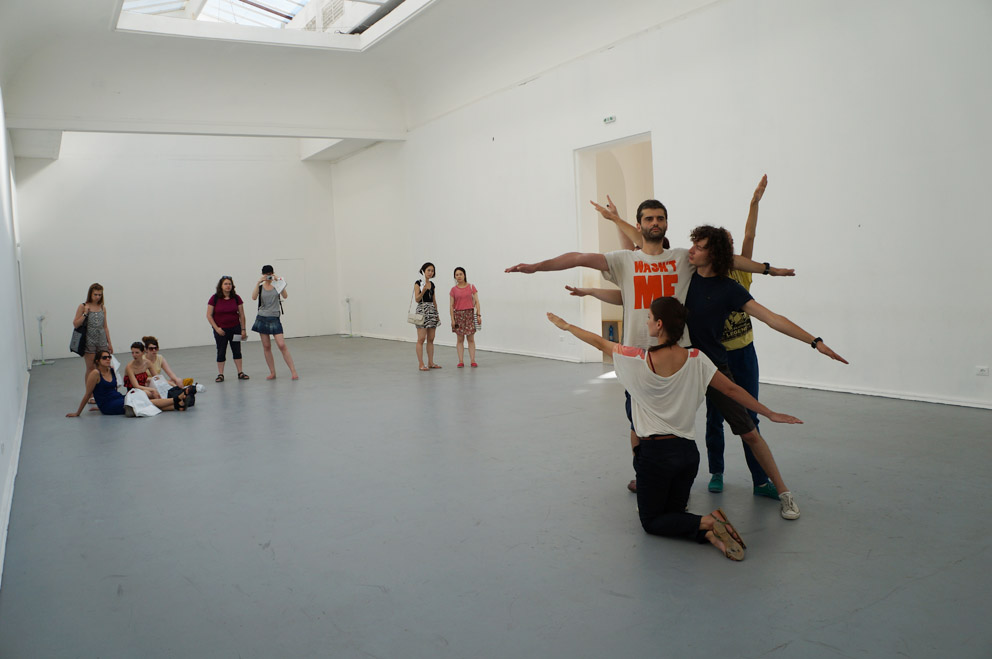
Alexandra Pirici and Manuel Pelmuş, An Immaterial Retrospective of the Venice Biennale, 2013. Enactment of Space Sculpture, by Norbert Kricke. Photo: Alexandra Pirici.
Alexandra Pirici and Manuel Pelmuş have conceived the Romanian contribution to the 55th Venice Biennale as a performance lasting for six months, always changing, in which the only protagonists are the performers with their bodies. An Immaterial Retrospective of the Venice Biennale consists of a “corporeal” representation of works presented at the Venetian exhibition in the past. The mise-en-scène includes not just performances but also paintings, objects and sculptures. The body simulates drawn or painted forms, reproduces the shapes of the most disparate materials and makes use of movement to represent different points of view or a nature in transformation. In this way the two artists are reconstructing an immaterial archive of the most famous contemporary art showcase in the world; they bestow an impalpable and ephemeral character on works that are often monumental and profoundly material.
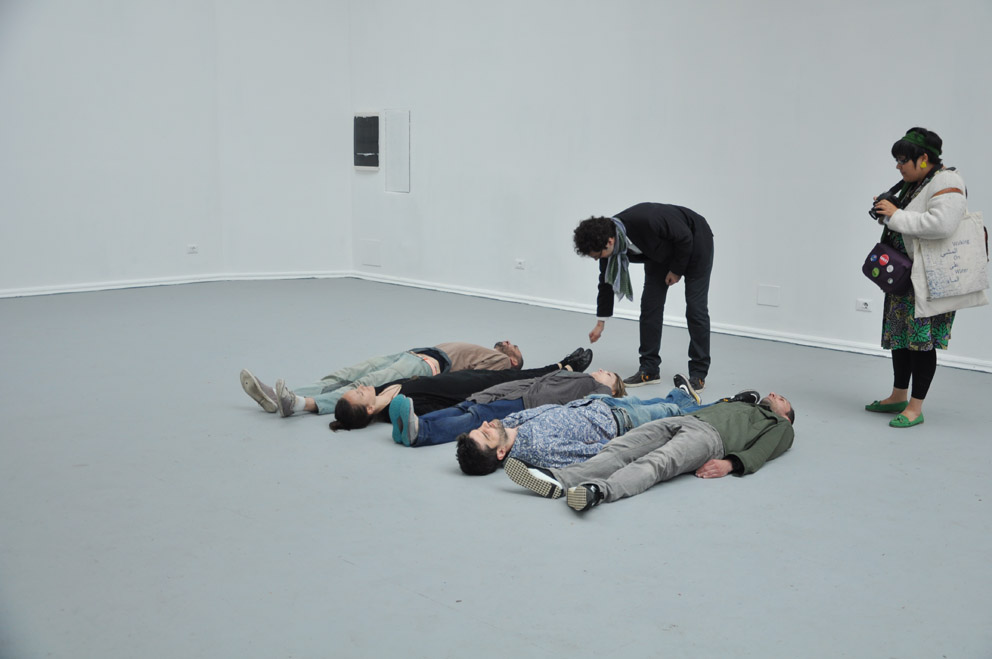
Alexandra Pirici and Manuel Pelmuş, An Immaterial Retrospective of the Venice Biennale, 2013. Enactment of Untitled (Public Opinion), by Felix Gonzales Torres. Photo: Eduard Constantin.
This invisible retrospective of the Biennale reminds me of André Malraux and his musée imaginaire—a museum made up of copies of works of art, i.e. of photographic images and reproductions. A flat, two-dimensional museum in which the physical consistency of the artifacts is no longer important—a fluid archive, with no walls, continually updated and able to bring together works located in very distant parts of the Earth. Pelmuş and Pirici’s intervention seems to take the premises of the French critic further: the museum they have created in the Romanian Pavilion is imaginary and imagined, but at the same time living and present. An immaterial museum made possible—paradoxically—by the physical substance of the performer’s bodies. An experiment able to bring to life what is mute, inanimate and immobile. An intervention, as the two artists put it, in which “the works literally come to life, breathe, sweat, tremble and watch you.”
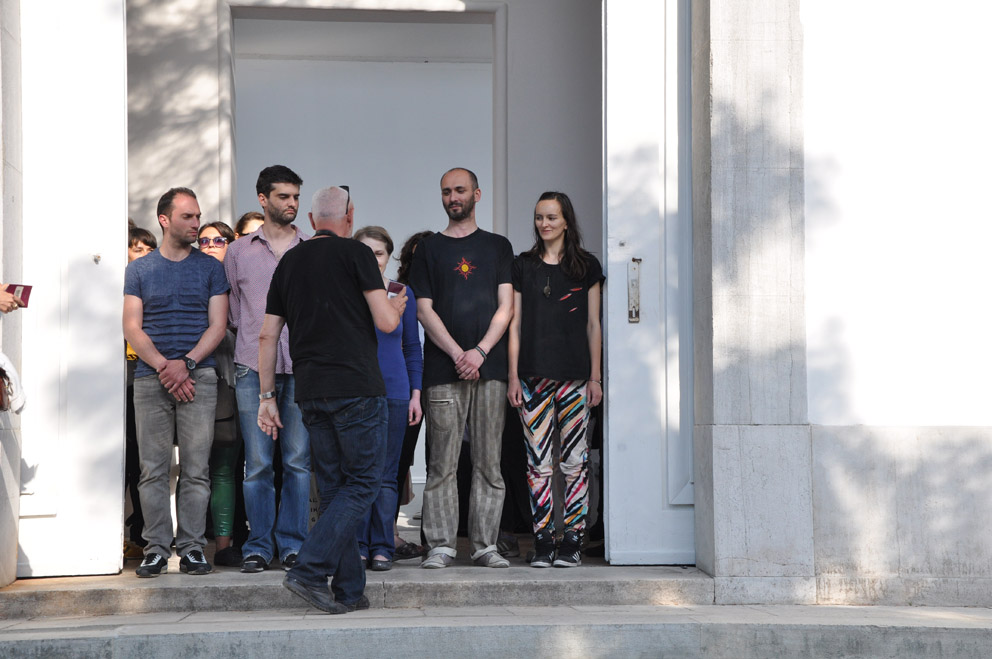
Alexandra Pirici and Manuel Pelmuş, An Immaterial Retrospective of the Venice Biennale, 2013. Quotation of Wall Enclosing a Space by Santiago Sierra. Photo: Eduard Constantin.
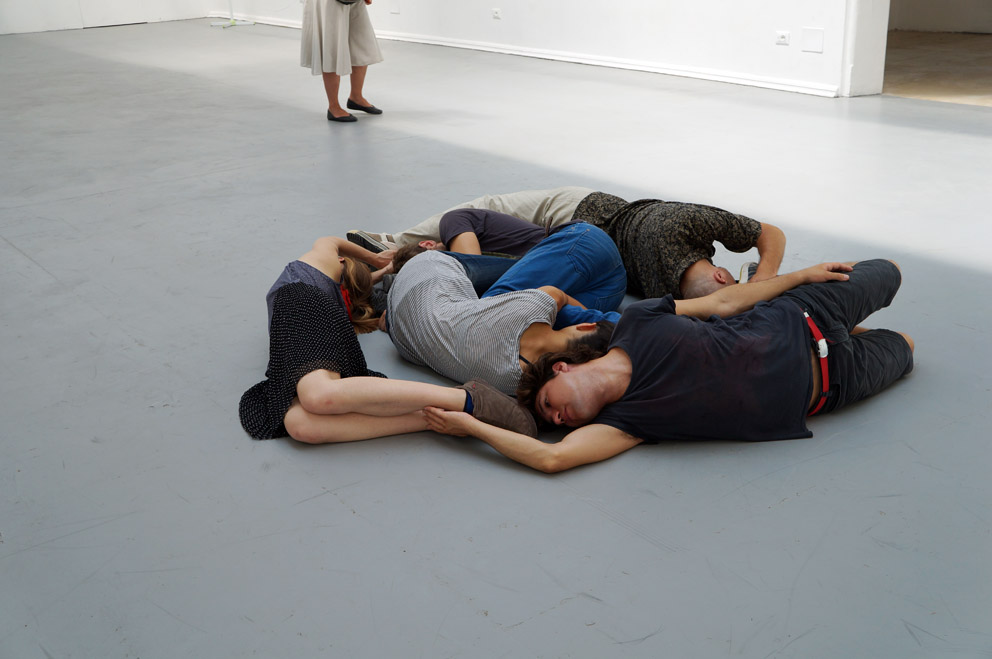
Alexandra Pirici and Manuel Pelmuş, An Immaterial Retrospective of the Venice Biennale, 2013. Enactment of Black Circle, by Kazimir Malevich. Photo: Alexandra Pirici.
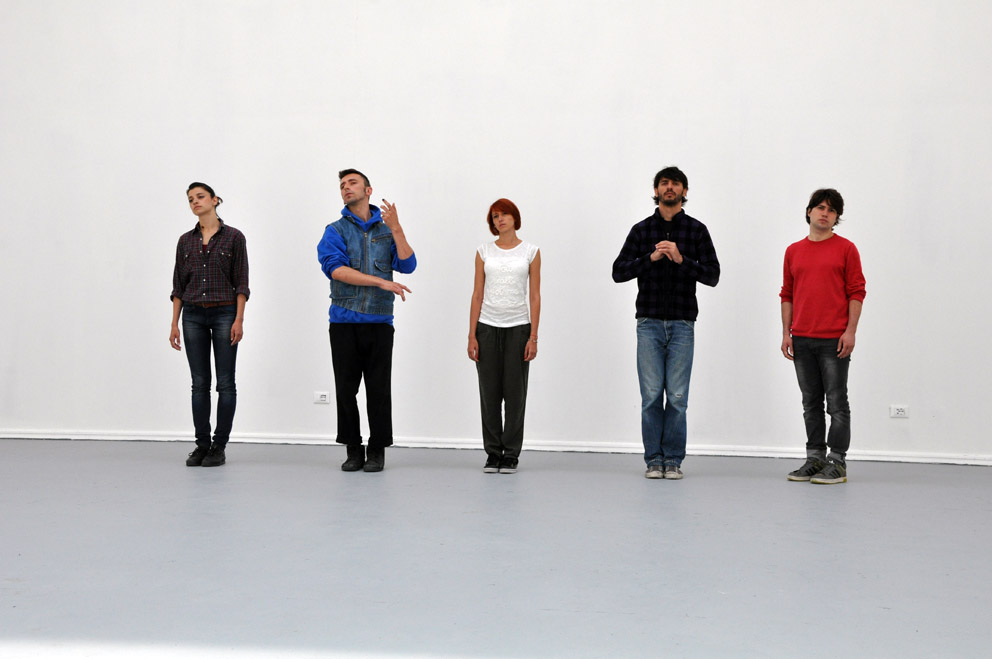
Alexandra Pirici and Manuel Pelmuş, An Immaterial Retrospective of the Venice Biennale, 2013. Enactment of the retrospective of paintings by Amedeo Modigliani, 17th International Biennial Art Exhibition, 1930. Photo: Eduard Constantin.
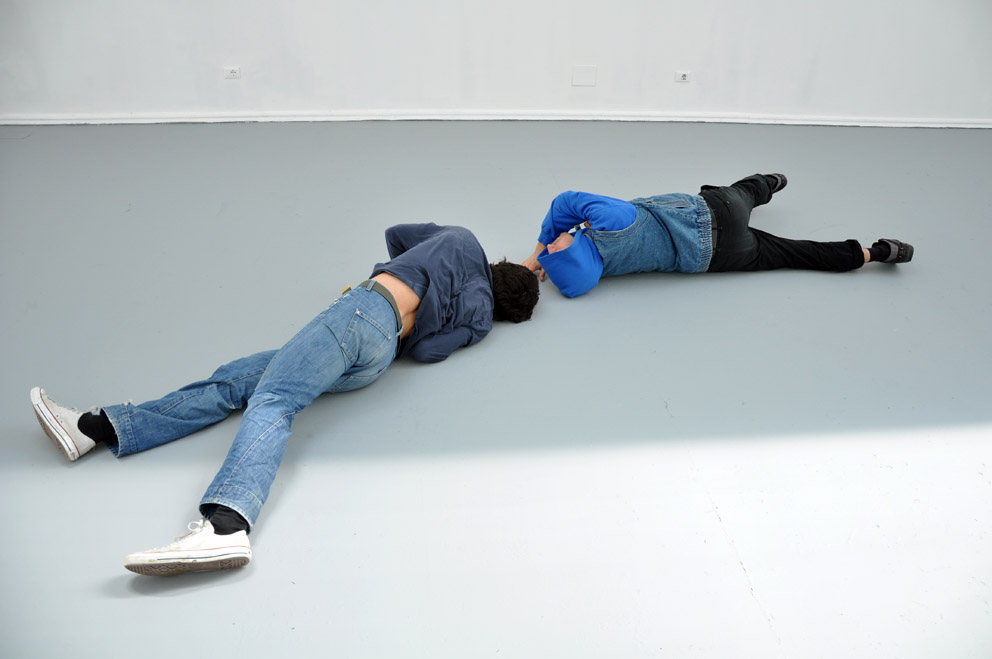
Alexandra Pirici and Manuel Pelmuş, An Immaterial Retrospective of the Venice Biennale, 2013. Enactment of + AND – by Mona Hatoum. Photo: Eduard Constantin.
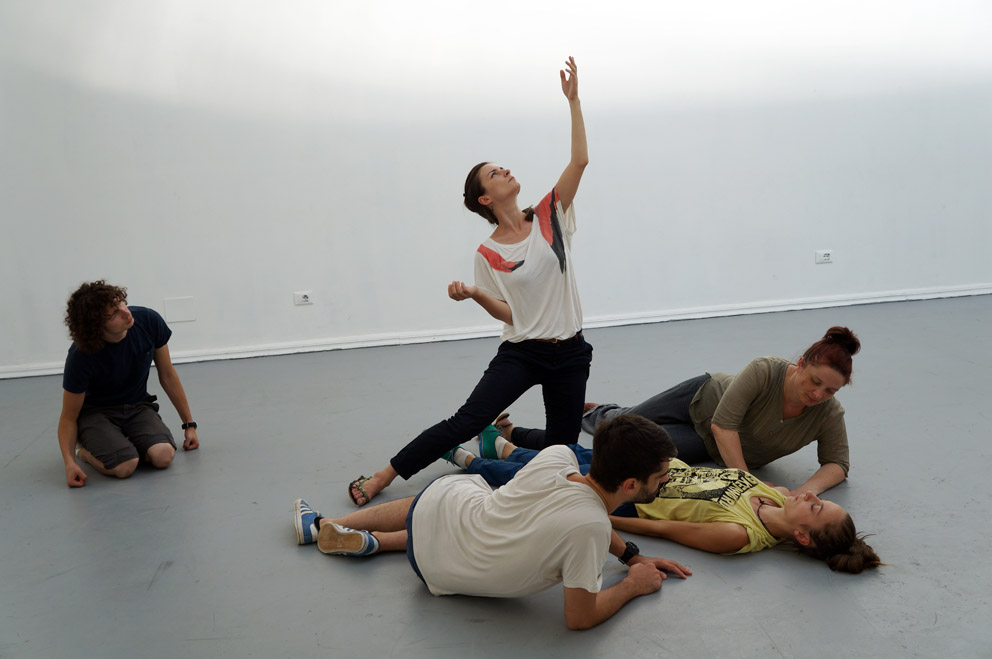
Alexandra Pirici and Manuel Pelmuş, An Immaterial Retrospective of the Venice Biennale, 2013. Enactment of Supreme Meeting by Giacomo Grosso. Photo: Eduard Constantin.
Follow Federico Florian on Google+, Facebook, Twitter.
Dello stesso autore / By the same author: ArtSlant Special Edition – Venice Biennale
Notes on ‘The Encyclopedic Palace’. A Venetian tour through the Biennale
The national pavilions. An artistic dérive from the material to the immaterial
The National Pavilions, Part II: Politics vs. Imagination
The Biennale collateral events: a few remarks around the stones of Venice